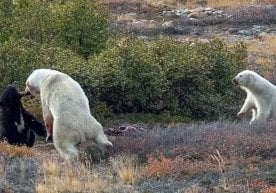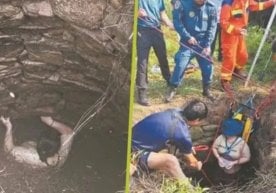
Humanity’s interest in ancient times has always existed. One such interest is the investigations into how life originated on Earth and how its geological history unfolded. Recently in Canada, an extremely important discovery was made that can provide answers to these questions.
From ancient times: the oldest rocks found in Canada
In the province of Quebec, in the rock layers of the Nuuvuagittuq greenstone belt, large-scale scientific research revealed one of the oldest rocks on Earth’s surface. Scientists from the University of Ottawa studied these geological formations using two different radiometric dating methods and confirmed their age — 4.16 billion years. This is considered the oldest confirmed geological structure on Earth.
Scientific world abuzz: ending the debate
Until now, the age of these rocks had been the subject of various estimates, ranging from 3.8 to 4.3 billion years. However, the results of the new study have put an end to long-standing scientific debates, demonstrating that the Nuuvuagittuq belts are even more ancient than the famous Acasta rocks of northern Canada.
“Time capsule” — unlocking early Earth history
The lead researcher, Professor Jonathan O’Neil, described these rocks as a “time capsule.” He explains that these stones reflect the earliest stages of Earth, when its surface was covered by a magma ocean. By studying them, one can understand the geological processes that occurred before life began and how tectonic activity functioned under such conditions.
Ancient dаta: key to the mystery of life
These rocks serve not only to determine geological age but also as a primary source of knowledge about early Earth conditions — its climate, the formation of tectonic plates, and the factors that led to life’s emergence. Such information is critical for understanding Earth’s history and structure.
Barriers to scientific achievements: indigenous community resistance
However, unexpected difficulties arose during the research process. The local Inuit community expressed opposition. They stated that some unscrupulous individuals are illegally selling rock samples online, engaging in vandalism. For this reason, the government temporarily halted sample collection.
Balancing national heritage and science
This incident once again highlighted that when conducting scientific research on natural resources, the interests of indigenous peoples must be taken into account. The Nuuvuagittuq belt is not only of geological significance but also holds sacred historical importance for the local community. Harmonizing science with cultural heritage is the key to future effective research.
Conclusion: Earth’s chronicle clarified
The 4.16-billion-year-old rocks found in the Nuuvuagittuq greenstone belt are an invaluable natural document for humanity. They represent a significant step toward understanding Earth’s history and unlocking the secrets of life. The scientific community may radically revise its understanding of life’s origins with their help. Simultaneously, respecting indigenous demands and preserving natural areas must remain guiding principles in research. Read “Zamin” on Telegram!
Ctrl
Enter
Found a mistake?
Select the phrase and press Ctrl+Enter Related news













